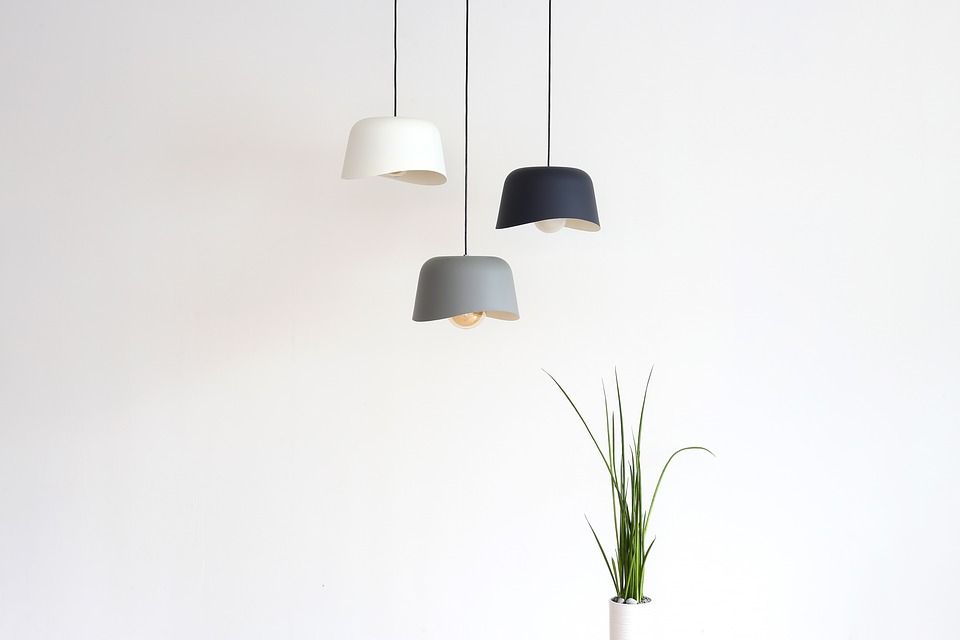Pendant lights are considered a good alternative to conventional lighting fixtures due to their functionality and style. They come in a wide variety of shapes, sizes, styles, and finishes. While this abundance of choice is normally considered a good thing, it may be intimidating and confusing for the average buyer. This guide is meant to help our readers determine which factors they should use as their basis for purchasing a pendant light.
What Are Pendant Lights?
Pendant lights are fixtures that are attached to a room’s ceiling and hang from a rod, chain, or multiple chains. While pendant lights may seem the same as chandeliers, pendant lights have only a single bulb incorporated in the fixture. Chandeliers are often found in upscale houses and establishments, while pendant lights are simpler and more focused on functionality.
What Are They Used For?
Pendant lights are commonly used for general lighting, where they function as the sole light source in a room, or as area lighting.
Area lighting is especially important for large rooms where the main light source is unable to sufficiently illuminate some areas. Area lighting can also be used to draw focus to elements in a room such as pieces of art, and furniture. Area lights can also help make a room feel more comfortable, as these lights are less intense than the central light.
Pendant lights are also perfect for work areas because they can be installed closer to the work space versus conventional lights. This is what also makes them ideal for drawing focus toward art pieces and decorations.
How Do I Choose the Right Pendant Light?
The primary factors that will help you determine what pendant light you’re looking for are:
- – Pendant light type
- – Location and ceiling height
- – Table shape and size
- – Ease of maintenance
Pendant Light Type
There are three main types of pendant lights:
- – Multi-arm pendant lights, which are similar in appearance to chandeliers, but with smaller bulbs
- – Linear pendant lights, which are thin and elongated, and are simpler in design
- – Shades, which consist of a glass shade where one globe is exposed. These are often used to illuminate hallways and other narrow areas
Each pendant type serves a particular design purpose. For example: multi-arm pendant lights are ideal for contemporary designs, especially when these come in a shiny finish like copper, brass, and chrome. On the other hand, shades are used to achieve a dramatic effect in dining rooms and living rooms.
Location and Ceiling Height
It’s important to ensure that your lights have enough clearance from the ground to allow people to pass through unhindered. Ideally, a 2.1 meter clearance is sufficient for most rooms with open spaces. The clearance needed varies depending on the room you’re installing the pendant lights, as well as the furniture in the room.
This is based on the presumption that different rooms have different furniture or varying dimensions. For example, clearance for bedrooms must be at least 7 feet from the lights to the floor, while pendant lights in the bathroom need at least 8 feet of clearance.
Table Shape and Size
Table shape and size are two factors that will determine the type of pendant lighting you need, as the manner in which these fixtures illuminate the area beneath them varies. It’s important to get the right type of lighting to ensure that the surface area of the table is properly lit.
Linear pendant lights work well with oval and long tables, while a multi-arm or a single pendant must be aligned to the center of the table for proper illumination. The clearance between tabletops and the bottom of the pendant light should be 26 to 28 inches.
Ease of Maintenance
Lights that have elaborate designs are significantly more difficult to clean than those with simpler designs. If cleaning is something you don’t enjoy doing, be sure to choose lights that have easy-to-reach surfaces. Pendant lights need to be cleaned occasionally to retain their appeal. It’s also important to select lights that are easy to assemble and disassemble, so they’re easier to replace when needed.
Once you’ve decided on what type of pendant light to buy, it’s important that you buy your lights only from reputable distributors such as ELS, not just to ensure that you get a quality product, but also to ensure that the product you purchase is built according to industry standards so as not to cause a fire.
How to Change the Mood of Your Home With Lighting
How to Design a Home Lighting Plan
Pendant Lighting: Is This the Look Your Home Needs?


